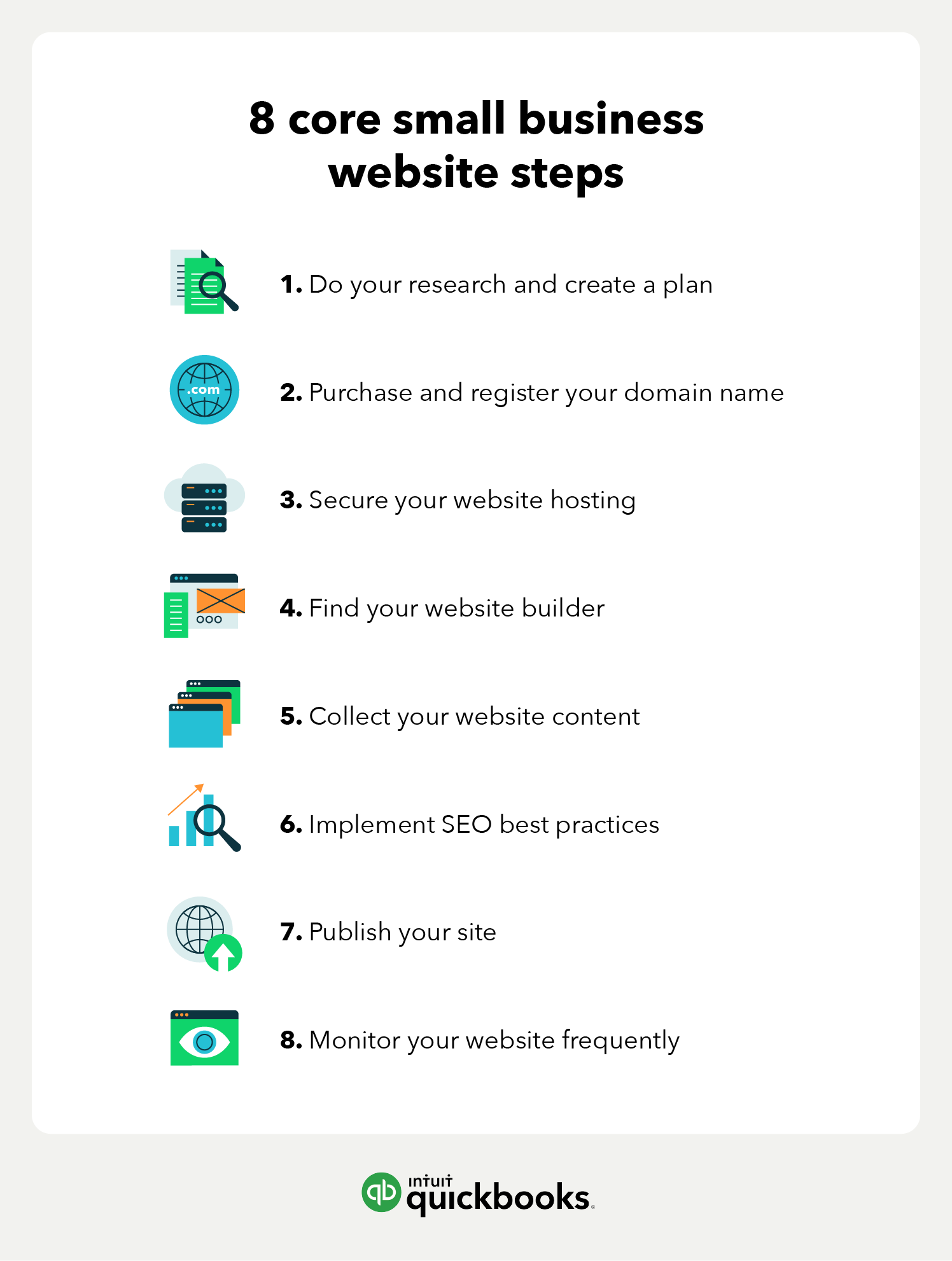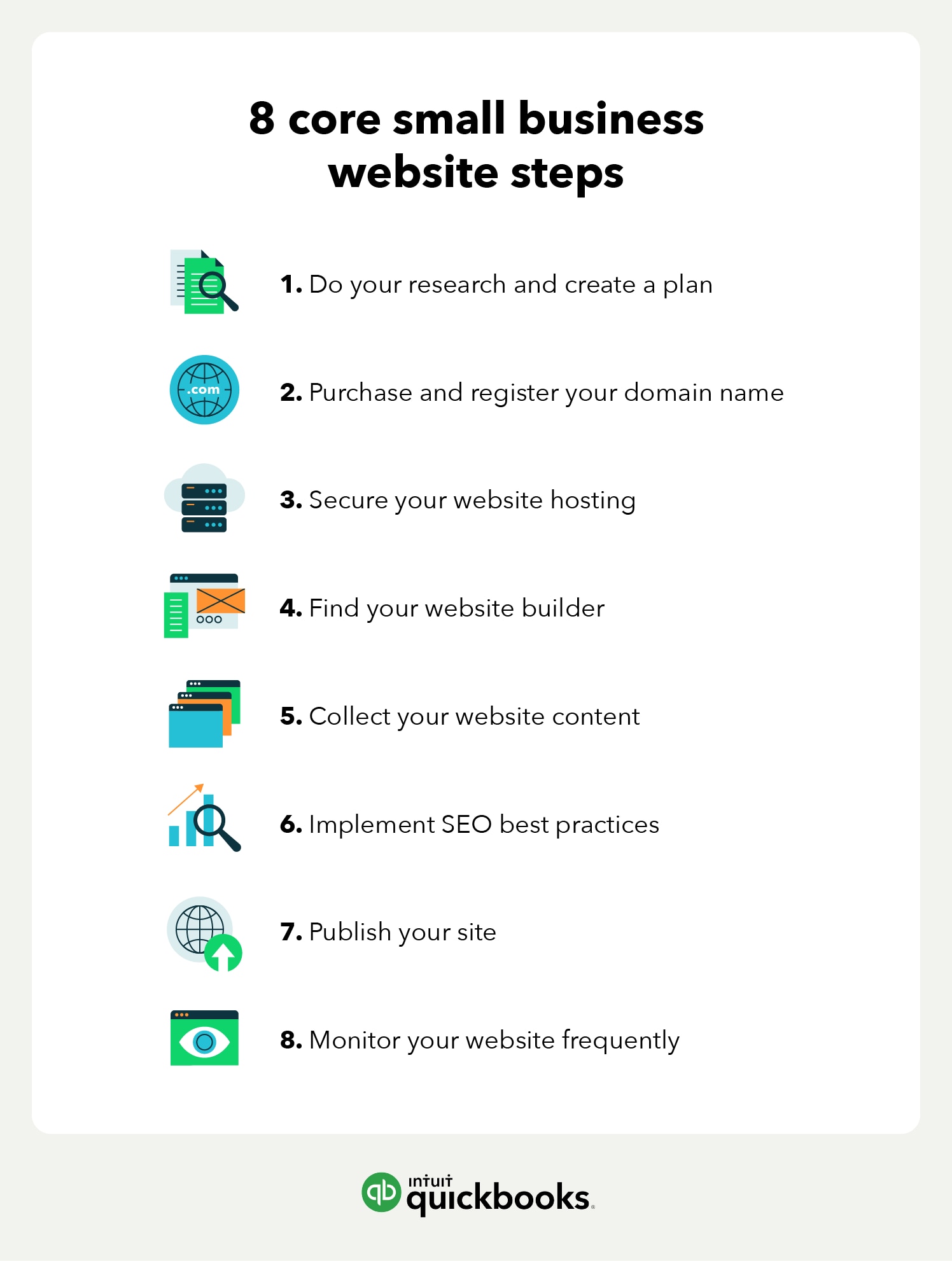In today’s digital age, having a website for your small business is essential. Not only does it provide a platform for customers to learn about your products and services, but it also helps establish your brand’s online presence. However, creating a website can seem like a daunting task, especially if you have no experience in web design or development.
But fear not! With the right tools and resources, you can create a professional-looking website that showcases your business and attracts potential customers. In this article, we’ll guide you through the process of creating a small business website, from choosing the right platform to designing your pages and optimizing for search engines. So, let’s get started!
Creating a small business website can be done in a few simple steps. First, choose a website builder or hire a web designer. Second, select a domain name and hosting provider. Third, design your website layout and add content. Fourth, optimize your website for search engines and mobile devices. Finally, launch your website and promote it through social media and other marketing channels.

Create a Small Business Website
Creating a website for your small business can seem like a daunting task, but it doesn’t have to be. A website is essential for any business these days, as it’s often the first point of contact with potential customers. In this article, we’ll take a look at the steps you need to follow to create a website that’s professional, engaging, and effective in promoting your business.
Step 1: Define the Purpose of Your Website
The first step in creating a website is to define its purpose. What do you want your website to do? Is it to sell products or services, to showcase your portfolio, or to provide information to potential customers? Once you’ve determined the purpose of your website, you can start to plan its design and content.
When planning your website, it’s important to keep your target audience in mind. Who are you trying to reach? What are their needs and interests? By understanding your target audience, you can create a website that’s tailored to their needs and preferences.
Step 2: Choose a Domain Name and Web Host
The next step is to choose a domain name and web host. Your domain name is the address of your website (e.g. www.yourbusinessname.com), and your web host is the company that provides the server space for your website to be stored and accessed online.
When choosing a domain name, it’s important to choose something that’s easy to remember and reflects your business. Your web host should be reliable, secure, and offer good customer support. Consider factors such as uptime, bandwidth, and storage when choosing a web host.
Step 3: Design Your Website
The design of your website is crucial in attracting and retaining visitors. Your website should be visually appealing, easy to navigate, and reflect your brand. When designing your website, consider the following:
- Choose a colour scheme that reflects your brand
- Use high-quality images and graphics
- Ensure your website is mobile-friendly
- Make sure your website is easy to navigate
Consider hiring a professional web designer if you’re not confident in your design skills.
Step 4: Create Content for Your Website
The content on your website should be engaging, informative, and relevant to your target audience. When creating content for your website, consider the following:
- Use clear and concise language
- Highlight your products or services
- Provide information about your business
- Include customer testimonials
Remember to keep your content up-to-date and relevant.
Step 5: Optimize Your Website for Search Engines
Search engine optimization (SEO) is the process of improving your website’s visibility in search engine results. By optimizing your website for SEO, you can increase your website’s traffic and attract more potential customers.
When optimizing your website for SEO, consider the following:
- Use relevant keywords in your content
- Include meta tags and descriptions
- Make sure your website is mobile-friendly
- Ensure your website has fast loading times
Step 6: Set Up Analytics and Tracking
Analytics and tracking are essential in measuring the success of your website. By tracking your website’s traffic, you can see what’s working and what’s not, and make changes accordingly.
When setting up analytics and tracking, consider the following:
- Set up Google Analytics
- Track your website’s traffic and user behaviour
- Use the data to improve your website
Step 7: Promote Your Website
Promoting your website is essential in attracting visitors and potential customers. There are several ways to promote your website, including:
- Use social media to promote your website
- Include your website on business cards and marketing materials
- Use email marketing to promote your website
Step 8: Maintain Your Website
Maintaining your website is essential in keeping it up-to-date and relevant. Regular maintenance can help prevent issues such as broken links, outdated content, and security breaches.
When maintaining your website, consider the following:
- Update your website regularly
- Back up your website regularly
- Ensure your website is secure
Step 9: Measure Your Website’s Success
Measuring your website’s success is essential in determining its effectiveness in promoting your business. By measuring your website’s success, you can see what’s working and what’s not, and make changes accordingly.
When measuring your website’s success, consider the following:
- Track your website’s traffic and user behaviour
- Monitor your website’s search engine rankings
- Use analytics to measure your website’s success
Step 10: Continuously Improve Your Website
Continuously improving your website is essential in keeping it up-to-date and relevant. By improving your website, you can attract more visitors and potential customers, and improve your website’s effectiveness in promoting your business.
When improving your website, consider the following:
- Use data and analytics to make informed decisions
- Engage with your audience and ask for feedback
- Stay up-to-date with the latest web design and development trends
Creating a small business website can seem like a daunting task, but by following these steps, you can create a website that’s professional, engaging, and effective in promoting your business.
Frequently Asked Questions
Here are some commonly asked questions about creating a small business website:
What are the benefits of having a small business website?
Having a small business website can bring numerous benefits to your business. Firstly, it helps establish your online presence, making it easier for customers to find you. Secondly, it can help you reach a wider audience, potentially increasing your customer base. A website also provides a platform for you to showcase your products or services, offer online shopping options, and provide important business information such as your contact details and opening hours.
Additionally, having a website can help establish your business as professional and trustworthy, which can be important in building customer trust and loyalty. Finally, a small business website can also help you gather valuable customer data and feedback, which can be used to inform your business strategy and improve your products or services.
What are the essential elements of a small business website?
There are several key elements that every small business website should have. Firstly, it should be visually appealing and easy to navigate, with clear and concise content that accurately represents your business. It should also be mobile-friendly, as the majority of internet users now access websites via mobile devices.
Other important elements include a clear call-to-action, such as a sign-up form or contact details, and a secure and reliable hosting service. Finally, a small business website should be optimized for search engines, using relevant keywords and meta descriptions to improve your search engine rankings and drive traffic to your site.
How much does it cost to create a small business website?
The cost of creating a small business website can vary greatly depending on a number of factors, such as the complexity of the site, the number of pages required, and the level of customization needed. A simple website with a few pages can cost as little as a few hundred dollars, while a more complex site with e-commerce capabilities and custom design can cost several thousand dollars or more.
It’s important to keep in mind that the cost of creating a website is an investment in your business, and a well-designed and optimized website can bring significant returns in terms of increased traffic, sales, and customer engagement.
Do I need to hire a professional web designer to create a small business website?
While it’s possible to create a small business website on your own using website builders and templates, hiring a professional web designer can offer several benefits. A professional designer can create a custom website tailored to your business needs and branding, ensuring a unique and professional online presence.
Additionally, a professional designer can ensure that your website is optimized for search engines, mobile devices, and user experience, which can be difficult to achieve on your own. Finally, a professional designer can provide ongoing support and maintenance for your website, ensuring that it remains up-to-date and secure over time.
How can I promote my small business website?
Promoting your small business website can help drive traffic and increase customer engagement. One effective way to promote your website is through social media, using platforms such as Facebook, Twitter, and Instagram to share links and updates about your business and website.
You can also use email marketing to promote your website, sending regular newsletters and updates to your customer base. Additionally, you can invest in online advertising, such as Google AdWords or social media advertising, to drive targeted traffic to your site. Finally, it’s important to ensure that your website is optimized for search engines, using relevant keywords and meta descriptions to improve your search engine rankings and drive organic traffic to your site.
In conclusion, creating a small business website is a crucial step in establishing your online presence and reaching a wider audience. With the right tools and resources, you can design a professional-looking website that showcases your products or services and attracts potential customers. Remember to keep your website user-friendly and easy to navigate, with clear calls-to-action that encourage visitors to engage with your business. By putting effort into your website, you can give your small business the boost it needs to succeed in today’s digital age.

